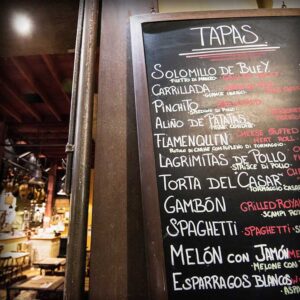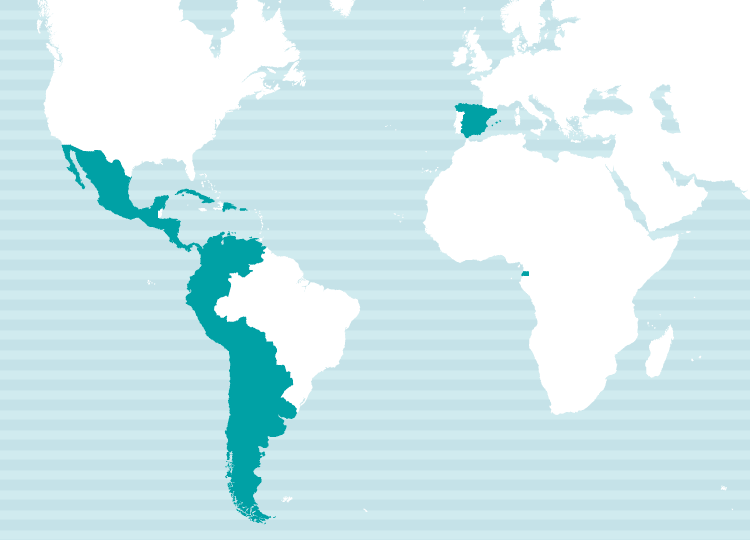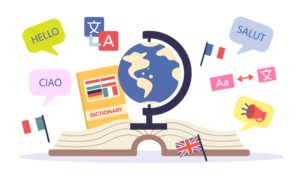Spoken as an official language in over 20 countries and regions, Spanish continues to be in high demand across a wide range of translation needs. Tourism-related content such as brochures, guidebooks, and websites is often translated into Spanish alongside English, Chinese, and Korean. Additionally, due to the strong presence of Japanese companies in Spanish-speaking Latin America, there is a growing need for translations of contracts, internal documents, reports, manuals, product specifications, SDS files, and more.
At NAIway Translation Service, we offer high-quality translations tailored to your needs, delivered by seasoned professionals with deep expertise in fields such as business, engineering, IT, law, healthcare, tourism, media, and sports.
We also understand the linguistic nuances between European Spanish and Latin American Spanish. Whether you're targeting Spain or Latin America, we adapt our translations to reflect regional language differences in vocabulary, spelling, and usage—ensuring your message resonates with the right audience.

Spanish That Changes Across Borders
Spanish Across the World: One Language, Many Variations
Over time and distance, the Spanish spoken in Spain and that of Latin America have evolved in distinct ways, resulting in notable differences in pronunciation and vocabulary. Words may differ not only in meaning or spelling but sometimes entirely in form. Even within Latin America, regional dialects vary from country to country.
For example, the word "computer" is translated as ordenador in Spain, computador in much of South America, and computadora in Mexico.
When translating into Spanish, it's essential to tailor the language to your target audience and region to ensure clarity and cultural relevance.

For more details, please feel free to contact us.
Spanish Translation Rates (Japanese-Spanish & Spanish-Japanese)
Below are NAIway’s standard translation rates.
Our regular translation fees cover all of the following services, so you can rely on us with confidence.
Translation
+
Native-Level Quality Check
+
After-Support※
※ As part of our after-support, we handle revisions and inquiries within the post-delivery verification period (typically one week).
(Please note that changes or additions to the original document are not included.)
Japanese to Spanish Translation

From 27.5 JPY per character
Spanish to Japanese Translation

From 33 JPY per word
- The actual cost will be estimated based on the content and volume of the document. Please send us the document when requesting a quote.
- Minimum Charge Policy. Depending on the character/word count and other conditions, we have a two-tier minimum charge system of 5,500 Japanese Yen or 11,000 Japanese Yen (tax included). This ensures coverage of the essential costs involved in translation coordination and quality assurance.

For more details, please feel free to contact us.
NAIway's Quality Assurance System
At NAIway Translation Service, we believe that quality management is our top priority as a professional translation company. To ensure the highest standards, we have developed our own Quality Assurance System (QAS) and implement strict quality control measures.
For high-quality Japanese-Spanish and Spanish-Japanese translations, every document undergoes a two-step review process: after the initial translation, a second translator conducts a thorough quality check.
We meticulously review each character and sentence, ensuring logical flow, terminology consistency, and appropriate expressions to deliver a refined translation tailored to your needs.

Multilingual Translation Support
At NAIway, we offer multilingual translation services. Along with Spanish, we provide translations in English, Italian, Russian, Thai, and more—all in one place.
If you're considering inbound tourism solutions, feel free to contact us for a consultation!

Introduction to Our Spanish Translators
Here are some of the translators currently working with or registered at NAIway.
For more details, please feel free to contact us.
What is the Spanish language?
The Spanish Language: A Global Voice Rooted in History
Spanish belongs to the Italic branch of the Indo-European language family and, like French, Italian, and Portuguese, it evolved from Latin. Over time, it was also shaped by influences from other languages, including Arabic.
Today, Spanish is the official language of the Kingdom of Spain and the primary language across most of Latin America—excluding Brazil—including countries like Mexico, Argentina, and Peru. With approximately 500 million speakers worldwide, it ranks among the most widely spoken languages globally. Spanish is an official language in over 20 countries and is one of the six official languages of the United Nations. On the internet, it is the third most-used language, following English and Chinese.
In Japan, a significant number of Spanish speakers have arrived from Latin America, particularly among the Japanese diaspora. Many of them do not speak Japanese, making Spanish an important language within Japan’s multicultural landscape as well.
Spanish Script
Spanish uses the Latin alphabet. In addition to the same 26 letters found in English, it includes the unique character eñe (Ñ, ñ), which features a tilde (~) over the letter "n."
How to Say “Hello” in Spanish
Buenas tardes/ˈbwenas ˈtaɾðes/
Primary Regions of Use

Language Family: Indo-European → Italic Branch
Regions Spoken: Spain, Mexico, Costa Rica, Guatemala, El Salvador, Panama, Honduras, Nicaragua, Cuba, Dominican Republic, Colombia, Venezuela, Ecuador, Peru, Bolivia, Argentina, Chile, Uruguay, Paraguay, Equatorial Guinea, and more
Spanish Grammar Insight
Spanish nouns are gendered—either masculine or feminine—and are generally easy to identify: words ending in -o are typically masculine, while those ending in -a are feminine. To form the plural, (e)s is usually added. Articles change based on gender and number: el (masculine singular), la (feminine singular), los (masculine plural), and las (feminine plural). There’s also a neutral form, lo, used for abstract or undefined concepts. Adjectives must agree with the nouns they modify in both gender and number.
Verbs in Spanish are categorized by their infinitive endings: -ar, -er, or -ir. These verbs conjugate based on the subject (yo, tú, él, etc.) and tense (such as past or present perfect), making verb conjugation one of the more complex aspects of the language.
While the basic sentence structure follows a Subject-Verb-Object (SVO) order, Spanish allows much more flexibility than languages like English or French. Subjects are often omitted, and objects can shift positions in a sentence. Because verbs carry information about the subject and tense through conjugation, it's often possible to know who is doing what without explicitly stating the subject.
Spanish Pronunciation and Spelling
Spanish has five vowel sounds—a, e, i, o, u—almost identical to those in Japanese, making the language relatively easy for Japanese speakers to pronounce and understand. One notable feature is that the letter h is silent, just like in French. Interestingly, the sounds typically associated with h in English are produced by the letters g and j in Spanish. For example, Japón (Japan) is pronounced “Ha-pon.”
Spanish also includes the unique letter eñe (Ñ, ñ), which features a tilde (~) over the n and represents the “nya/ni/nyu/nye/nyo” sounds in words—similar to Japanese kana like「にゃ(nya)」「にゅ(nyu)」etc.
Another hallmark of Spanish punctuation is the use of inverted question marks at the beginning of questions, paired with a standard question mark at the end.
Example: ¿Qué es esto? (“What is this?”)


